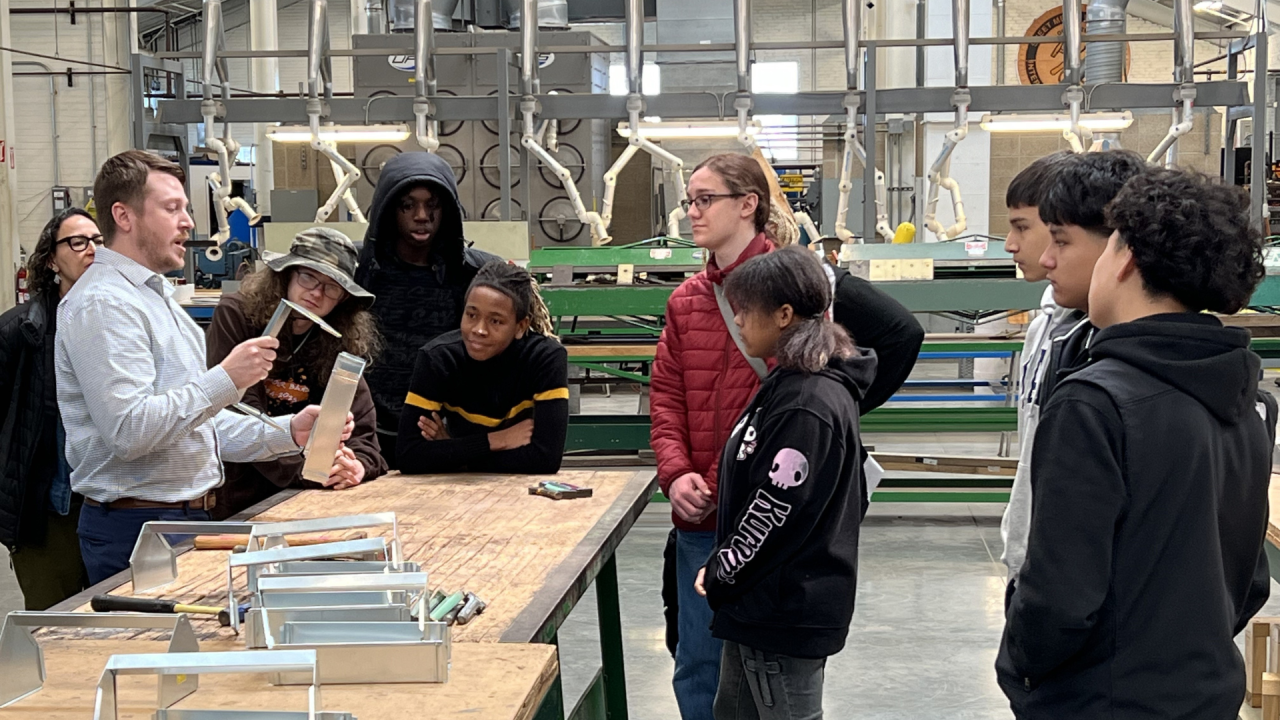December 2, 2025
As we look to the future of energy, it’s about much more than power itself. It’s about creating a world based on sustainable, reliable, and cost-effective technologies that can produce the energy required to meet evolving demands—such as the current AI revolution–and in which the next generation can thrive. Since I began this company in 2000, Ameresco has been committed to doing well by doing good. I firmly believe that doing good comes in many forms, and one of the most impactful can be supporting the development of a skilled, innovative and dedicated workforce.
In Ameresco’s 2024 Clean Energy Careers Report, we found that while 80% of the Gen Z and Millennials surveyed felt that working in the clean energy sector would be a good career path, significantly fewer knew what that career path would entail, or how to get started. The results of that report made it clear that – as an organization with a stake in the future of the energy workforce – we needed to take action to bridge this knowledge gap. Rapid technology advancements and the integration of AI into our energy infrastructure are driving new energy needs and transforming the required skills. Addressing the knowledge gap is more critical than ever.
Empowering the Next Generation
We recently partnered with Ritenour School District in St. Louis, Missouri to support the launch of their new Path to Trades (P2T) program. P2T provides students with hands-on training and industry certifications that will set them up for success in the energy and construction trades.
As one of our key project team members explained to St. Louis Magazine: “The model is enroll, enlist or employ when you graduate from high school. So how do you do that with the employ aspect? You start with these students at a very young age and get them into this program so they can understand what’s available to them after graduation.”
P2T is a two-year work-based learning initiative allowing students to explore trade careers, providing students with hands-on learning experiences and industry-recognized certifications like First Aid/CPR and OSHA 10. The program offers students – many of whom come from under-resourced communities – valuable exposure to critical industries such as electrical work, sheet metal, roofing, and environmental consulting by integrating practical energy education with career development. When high school juniors, the students can pursue further training at the local vocational school, enabling them to graduate with enhanced skills and dual diplomas.
The inaugural cohort of students is currently learning the skills necessary to succeed in various trades, supported by experienced professionals from organizations like IBEW Local 1, Sheet Metal Workers Local 36, and Enpaq Consulting, as well as Ameresco. We are proud to sponsor P2T and have members of the Ameresco team serve as industry mentors to the students.
Our team has worked closely with students, guiding them on field trips to local trade unions, connecting them with experienced mentors, and ensuring readiness to enter the trades or industry. The most important part of the P2T is demonstrating to students the number of doors that are open to them after high school, and that a college education – which many students in the district have not historically pursued – is not the only path to a fulfilling, successful career.
As one Ritenour school official said when speaking to St. Louis’s First Alert Four News about the program, “[we] have kids who are passionate about construction and we’re [showing them] there’s so much more involved in construction than [they] think.”
Upon graduation, these students will have earned certifications, built valuable industry connections, and gained hands-on experience that will prepare them for whatever path they choose. This initiative exemplifies how private and public sector can collaborate to support workforce development, creating long-term solutions that benefit everyone.
Showing the Way Towards an Energy Efficient Future
The need for energy-efficient solutions in schools is more urgent than ever. According to the U.S. Department of Energy, energy-efficient schools can reduce annual operating costs by up to 30%, a significant amount when you consider that America’s primary and secondary schools spend nearly $8 billion annually on energy.
Ameresco has a long history of partnering with schools on efficiency and renewable energy projects, often involving a learning component to generate awareness and benefits of clean energy. We work directly with educational leaders to prioritize and implement improvements without up-front capital through unique contracting like energy savings performance contracts (ESPCs). These programs can also generate savings that can be reinvested into educational programs and resources. These projects can help make learning environments more comfortable for students to support performance outcomes, without sacrificing funding.
Through programs like P2T, we can get students involved in championing clean energy initiatives in their own schools. We recently began work on a project in Nelsonville, Ohio with the Tri-County Career Center to install solar panels on one of the career center’s buildings. Local high school students who are part of the Career Center’s Electrical Trades program will have the opportunity to work alongside licensed solar installers and gain hands-on experience on the day-to-day of a career they could pursue.
Scaling the Impact
I hope these stories inspire districts to adopt similar programs, integrating infrastructure upgrades and clean energy solutions with career development initiatives. As energy leaders, we must partner with schools and career centers to promote access to the diverse education necessary to stay on ahead of the energy transition.
Together, we are not only addressing today’s energy challenges but also equipping the next generation of leaders and innovators with the tools to tackle future ones. At Ameresco, we are excited to be part of these students’ journeys and look forward to continuing our work with local communities to build a clean energy future that benefits everyone.
# Originally published on LinkedIn. #
This free resource provides a tangible roadmap for organizations looking to reduce their carbon footprint and achieve net zero emissions. The built environment is responsible for roughly 40% of energy-related carbon emissions. This resource offers a holistic approach to cutting consumption, costs, and carbon and practical solutions for facility owners and operators.

